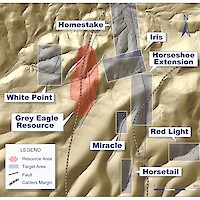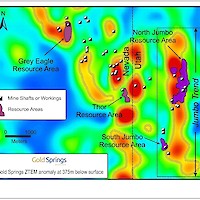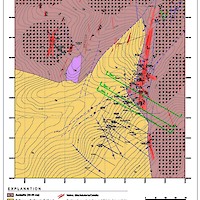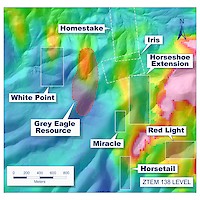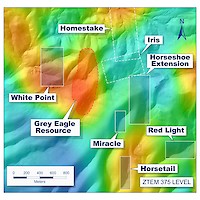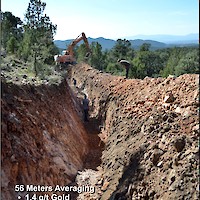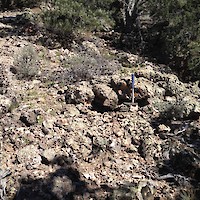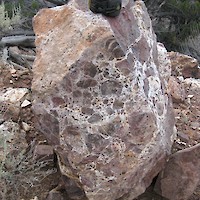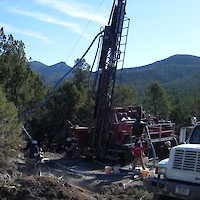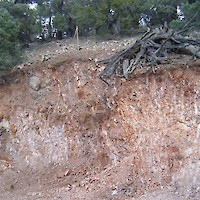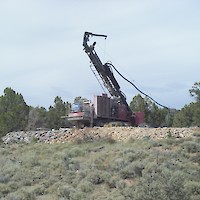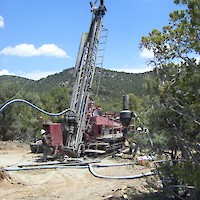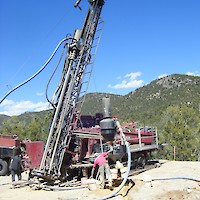System Type:
Low-sulfidation epithermal, comprising of quartz-calcite veins with surrounding stockwork veining and brecciation, hosted within a caldera ring-fracture system.
Strike-Length:
Grey Eagle has been traced over a strike length of 850 meters through drilling and remains open to the north.
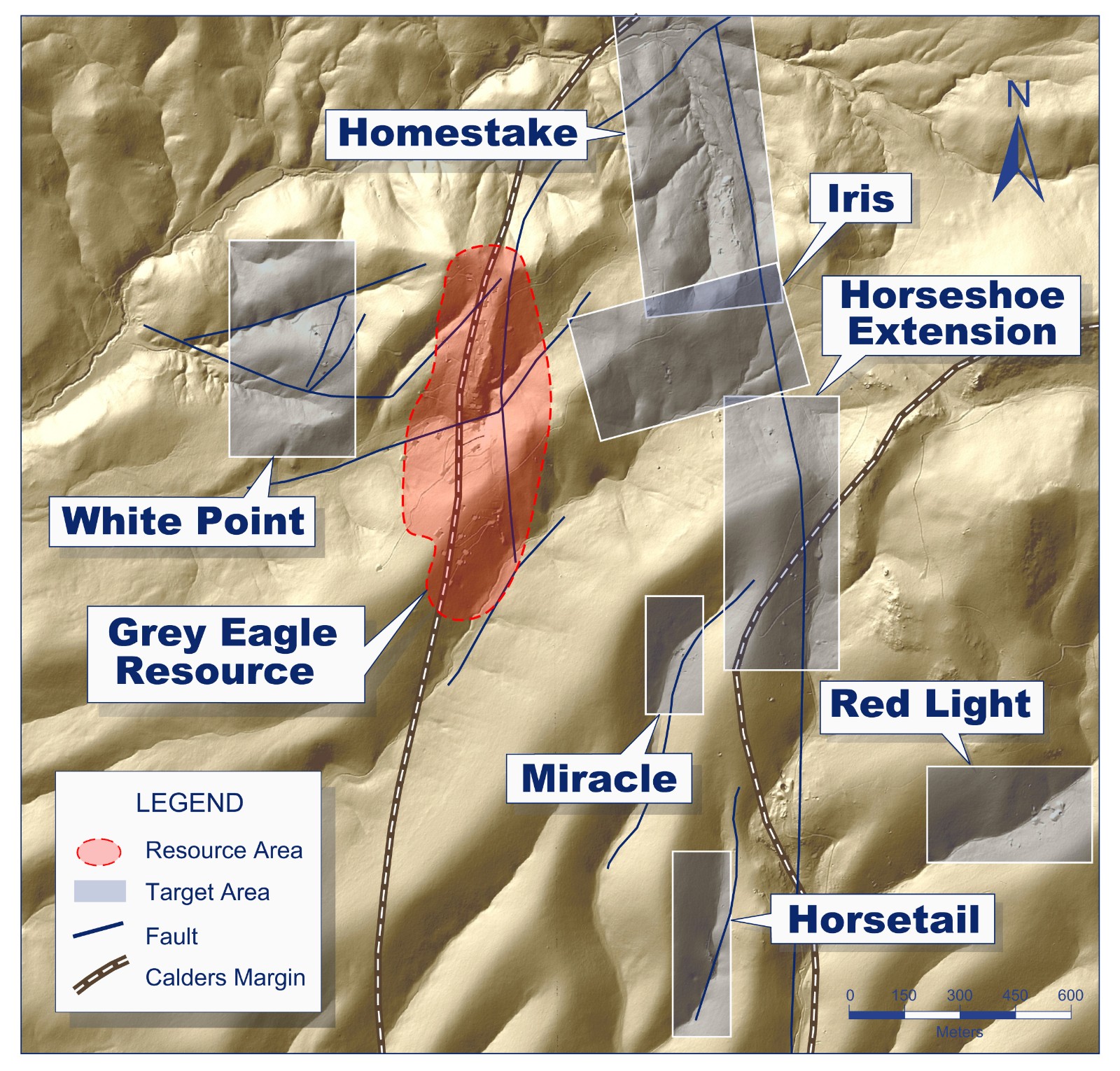
Resource:
|
Category |
$1,800 Pit Constrained - 0.25 g/t gold cutoff |
||||
|
Tonnes (1000s) |
Au |
Ag |
|||
|
Grade (g/t) |
Troy oz |
Grade (g/t) |
Troy oz |
||
|
Measured |
2,852 |
0.65 |
59,388 |
7.23 |
663,363 |
|
Indicated |
4,433 |
0.59 |
84,273 |
7.03 |
1,002,347 |
Measured and Indicated |
7,285 |
0.61 |
143,662 |
7.11 |
1,665,711 |
Inferred |
783 |
0.39 |
9,816 |
5.90 |
148,327 |
The Grey Eagle mineral resource has an effective date of June 13, 2022, and based on the drilling results as of 31.12.2021. The inferred resource is in addition to the measured and indicated resource. Mineral resources that are not mineral reserves do not have demonstrated economic viability. Numbers have been rounded, which may lead to some numbers not adding up exactly. The resource estimate reflects gross metal content that is not adjusted for metallurgical recoveries.
Location:
The Grey Eagle resource is located on the Nevada side of the Gold Springs project, on the northwest corner of the project, 700 meters west of the Homestake Target and 400 meters east of the White Point Target.
Drilling:
A total of 85 holes have been drilled at Grey Eagle for a total of 12,275 meters. The holes extend over an 850-meter strike length of the mineral system, much of which is covered by post-mineral tuffs. The system is open to expansion to the north and west. To the south, the Grey Eagle mineralized zone is down-dropped through a series of normal faults which has resulted in thickness of post-mineral tuff of up to 200 meters.
Geophysics:
The gold mineralization at Grey Eagle is associated with strong north-east and north-west trending CSAMT (ground geophysical survey) resistivity highs. The north-east feature is interpreted to be associated with a caldera margin and the north-west feature associated with a major structural zone. Grey Eagle formed at this structural intersection (see maps below).
Geology:
The Grey Eagle target is characterized by a complex zone of intersecting veins trending north-south, northeast, and northwest within a north-northeast trending structural zone dipping 50° west. The structure is interpreted to be a segment of a caldera ring fracture system which is highlighted in the ZTEM (Airborne geophysical survey) geophysical data. The zone is defined by an upper and lower bounding structure, which are segments of a bounding fault along a caldera margin. The rocks between the faults were shattered by differential movement along the structures, resulting in a 20-to 80-meter thick zone of mineralized material. The veins form within this structural package, which is traceable on the surface for over 700 meters before being obscured by post-mineral cover. The individual veins and vein zones are characterized by banded white quartz, and pseudomorphs of silica after bladed calcite. Calcite and fluorite have been observed both in outcrop and in drill samples. Areas of brecciation, stockwork, and sheeted veining are present throughout this package of structurally prepared rocks.
Structural Geology:
Structure at Grey Eagle is dominated by a caldera margin which hosts the current resource. Mineralization is confined by two structures thought to be part of the ring fracture system of the caldera. During the collapse of the caldera there was differential movement along these structures creating a shattered zone that was conducive for the migration of mineralized fluids and the deposition of gold and silver.
Historical Mining:
Three adits were developed to explore the Grey Eagle Vein, that can be traced for 640 meters along a general north-south strike. The north end of the structure is composed of quartz stockworking and veining in zones up to 137 meters in width.
Two tunnels were driven under the area where GRC drilled the initial discovery holes at Grey Eagle which returned 6.39 g/t gold equivalent over 19.8 meters. Previous work at the Grey Eagle by Energex in the 1980s included underground sampling from these tunnels. The results (pre 43-101) from the Energex channel sampling report intervals:
- 12.5 g/t gold over 3.50 meters 11.6 g/t gold over 0.91 meters
- 10.3 g/t gold over 0.91 meters 9.7 g/t gold over 0.91 meters
- 6.3 g/t gold over 1.83 meters 6.3 g/t gold over 0.91 meters.
GRC collected samples from these same underground workings that showed values of up to 29.3 g/t gold and 47.4 g/t silver. These samples are from quartz and quartz-calcite veins, stockwork zones, and matrix-supported breccia cemented by silica.
Geochemistry:
Rock chip sampling in the Grey Eagle target has been conducted across the area of mineralization, and the results show values of up to 13.85 g/t gold and 35.3 g/t silver. During 2012, GRC completed a 60-meter-long trench across a portion of the southern Grey Eagle zone and opened two historic underground workings. The trench was nearly perpendicular to the strike of the mineralized zone and exposed five main north-south striking veins between 1.5 to 8 meters thick and numerous smaller veinlets and stockworks of varying orientation. A 56.4-meter-wide section cut perpendicular across the mineralization averaged 1.4 g/t gold and 10.1 g/t silver. GRC collected 22 select vein and surrounding host rock samples throughout the length of the trench. The selective samples assayed from 0.12 g/t to 8.59 g/t gold, with an average value for all samples of 1.4 g/t, which is identical to the average of the channel sampling in the trench.

